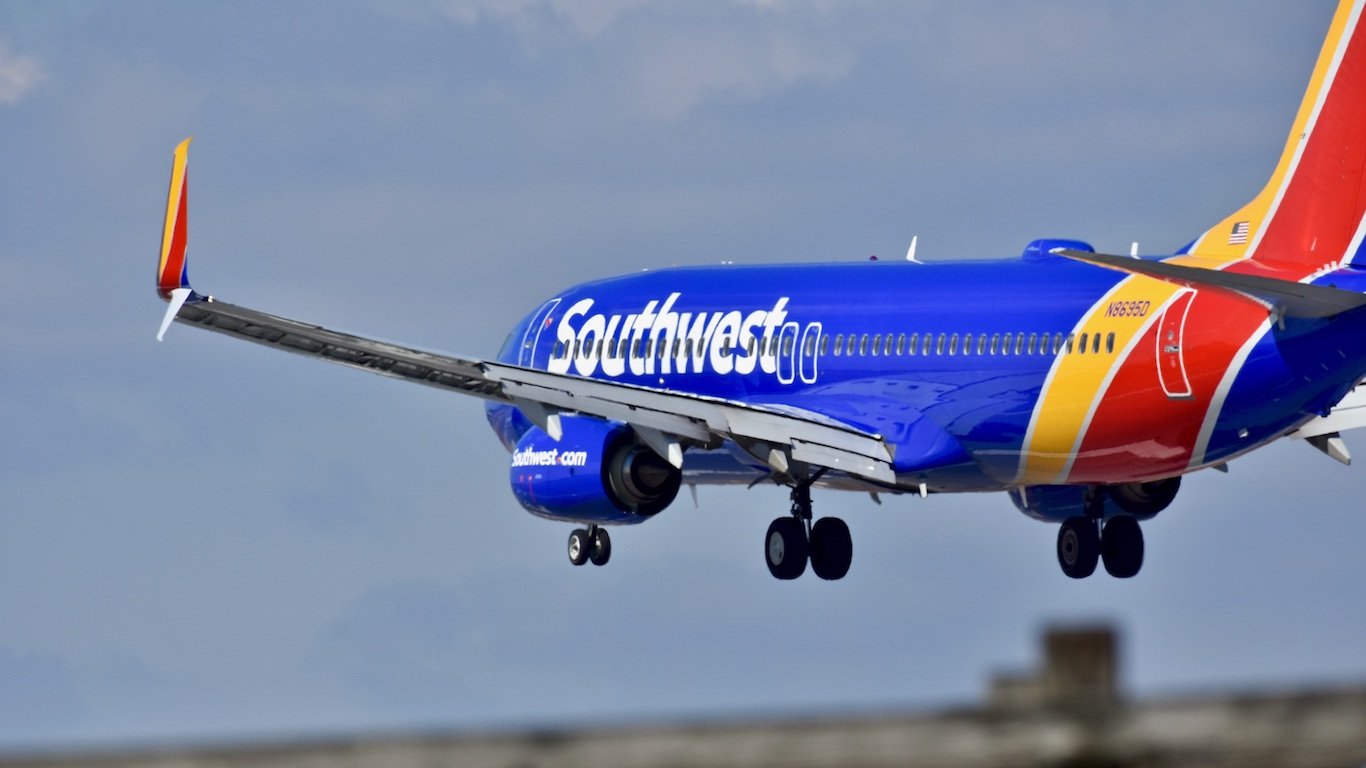

Before the COVID-19 pandemic hit the United States in March of last year, the country’s commercial aviation had celebrated a record-breaking year. U.S. carriers were flying 2.5 million passengers and 58,000 tons of cargo every day. At the end of February 2020, those totals had increased by 5%.
Then the bottom fell out and passenger traffic plunged 96% by mid-April, according to industry trade group Airlines for America. Passenger carriers reported pretax losses totaling $46 billion in 2020, and airline industry analysts are forecasting losses of $18 billion for 2021.
In testimony before the aviation subcommittee of the U.S. House Committee on Transportation and Infrastructure, Airlines for America’s president Nicholas Calio also said, “It took 10 years—from April 2010 to March 2020—for U.S. passenger airlines to add 83,000 workers to their payrolls. Sadly, it took just 10 months—from March to November—to shed 93,000 jobs.”
To make it through the pandemic-driven collapse of air travel, airlines have received loans and other assistance to help meet payrolls and keep workers employed. The recently passed rescue legislation included $15 billion for that purpose. Airlines themselves have issued notes and borrowed against their frequent flyer programs in order to maintain liquidity until coronavirus infection levels can be brought under control.
The recent passage of the COVID-19 relief bill includes an additional $15 billion for airlines to use to keep their workers on the payroll. The legislation sent shares higher last Friday, and most of the airline stocks posted new 52-week highs either Friday or Monday.
Here’s a look at how the country’s four largest airlines are positioned for reporting first-quarter results following price target increases announced Tuesday by analysts at Goldman Sachs.
Southwest
Southwest Airlines Co. (NYSE: LUV) is the largest U.S. carrier by market cap ($36.1 billion), more than double its level in May of last year, but still short of its peak of nearly $40 billion in December 2017. Revenue fell 60% year over year in 2020, and the loss per share totaled $6.22.
In the first quarter of last year, Southwest posted a loss per share of $0.15, and it is forecast to post a loss of $1.87 in the first quarter of this year. Estimated quarterly revenue of $1.97 billion is less than half the year-ago total of $4.23 billion.
The story improves for the second quarter, however. Analysts see the loss per share shrinking from $2.67 in the same quarter last year to $0.74 this year. The full-year loss is forecast at $1.97.
The stock traded at around $61, in a 52-week range of $22.47 to $62.76, and the consensus 12-month price target is $58.28. On Tuesday morning, Goldman Sachs boosted its price target on the stock from $47 to $69 and maintained its Buy rating. The highest price target on the shares is $71.
Southwest is not forecast to post a full-year profit until 2022 and currently trades at about 21 times expected 2022 earnings and 14 times expected 2023 earnings.
Delta
The second-largest U.S. airline by market cap is Delta Air Lines Co. (NYSE: DAL), which currently is valued at $31.92 billion. In mid-January of last year, the airline’s market cap reached $39.5 billion. Revenue fell by more than 63% in 2020, and the loss per share for the year was $10.76.
Next month the company is expected to report a loss per share of $2.71, compared with a loss of $0.51 in the first quarter of 2020. Quarterly revenue is forecast at $4.06 billion, a drop of nearly 53% from $8.59 billion a year ago.
As with Southwest, the second-quarter outlook brightens. Analysts estimate a net loss per share of $1.07, compared with a loss of $4.43 a year ago. The full-year loss is forecast at $2.76, an improvement of about 75% compared to a loss per share of $10.76 in 2020.
The stock trades at around $50, in a 52-week range of $17.51 to $52.28, and the consensus price target is $48.33. Goldman Sachs also raised its price target on Delta stock on Tuesday, from $35 to $47, and maintained a Neutral rating.
Delta is not expected to post a full-year profit until 2022 and currently trades at about 13 times expected 2022 earnings and just tight times expected 2023 earnings.
United
With a current market cap of around $19.2 billion, United Airlines Holdings Inc. (NASDAQ: UAL) is the third-largest U.S. carrier. At the end of 2019, the airline’s market cap was around $23 billion. Revenue collapsed by nearly 65% year over year in 2020, and the loss per share totaled $27.57.
When United reports first-quarter results late next month, analysts expect a loss per share of $6.87, compared with a loss per share a year ago of $2.57. Revenue for the quarter is pegged at $3.29 billion, a drop of nearly 59% year over year.
The second quarter looks better as analysts estimate a net loss of $3.17 per share, bringing the estimated first-half loss to $10.07. However, United’s full-year loss currently is forecast at $9.97, indicating that profitability is expected to return in the second half of the year. The forecasts for both Delta and Southwest indicate the same pattern.
United’s stock traded at above $60 Tuesday morning, in a 52-week range of $17.80 to $61.69 and with a consensus price target of $51.56. Goldman Sachs also has a Buy rating on United stock and boosted its price target from $54 to $74.
The shares trade at 18 times expected earnings in 2022 and about eight times expected 2023 earnings.
American
American Airlines Group Inc. (NASDAQ: AAL) has a current market cap of around $15.8 billion, making it the fourth-largest U.S. airline. That’s actually an improvement of about a third from its level of $11.8 billion at the end of 2019. Revenue fell 62% year over year in 2020, and American’s loss per share totaled $19.66.
When the company reports first-quarter results next month, analysts are looking for a loss per share of $3.93 on revenue of $4.05 billion. The per-share loss is about 50% worse than the quarterly loss a year ago, and the revenue total is down by 52%. Analysts expect American to post a full-year loss of $7.94 in 2021 on revenue of $25.6 billion, an improvement of about 48% year over year.
As with the other airlines we’ve looked at, the second quarter’s expected loss narrows, but the full-year outlook indicates that per-share losses will continue into the third quarter and maybe even into the fourth.
American’s stock traded at shy of $25 on Tuesday, in a 52-week range of $8.25 to $25.94. The consensus price target on the stock is $14.19. Goldman Sachs maintained a Neutral rating on American but lifted the price target from $11 to $20.
American is not expected to post a full-year profit until 2022, and the estimates range from $0.01 to $0.10. That works out to sky-high multiples. An expected profit per share of $1.91 in 2023 is about 13 times the current share price.
Take This Retirement Quiz To Get Matched With A Financial Advisor (Sponsored)
Take the quiz below to get matched with a financial advisor today.
Each advisor has been vetted by SmartAsset and is held to a fiduciary standard to act in your best interests.
Here’s how it works:
1. Answer SmartAsset advisor match quiz
2. Review your pre-screened matches at your leisure. Check out the
advisors’ profiles.
3. Speak with advisors at no cost to you. Have an introductory call on the phone or introduction in person and choose whom to work with in the future
Take the retirement quiz right here.
Thank you for reading! Have some feedback for us?
Contact the 24/7 Wall St. editorial team.
 24/7 Wall St.
24/7 Wall St. 24/7 Wall St.
24/7 Wall St.


